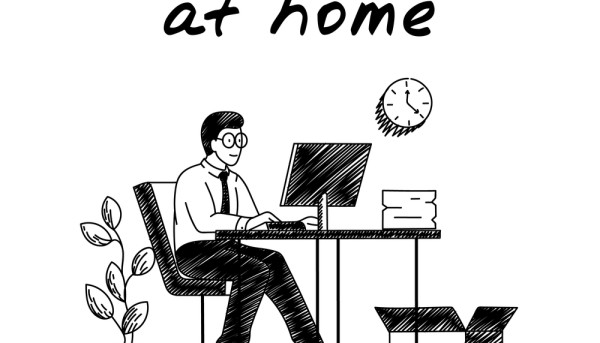How Long Does a Roof Last?

How Long Does a Roof Last?
Knowing how long a roof will last can help you prepare for maintenance and make long-term plans for repairs. Different types of roofs have different lifespans. For instance, Wood shingles can last about 25 years while Metal roofs can last about 40 years. However, there are some things that can reduce the lifespan of your roof.
Wood shingles last 25 to 30 years
Wood shingles are a durable choice for a roof. If installed properly, they can last for 25 to 30 years on average. However, wood shingles require periodic inspections, especially after heavy storms. To keep your wood shingle roof in good shape, you should check for cracks, lifting shingles, and missing granules.
Wood shingles are less expensive than other materials but they do require more maintenance than other roofing types. They are typically made from cedar, a material that is naturally resistant to insect and rot. They can also add beauty to your home, especially steep-pitched roofs. Wood shingles cost about $250 to $600 per square foot and should be checked annually for splits.
Wood shingles can last up to 30 years if maintained properly, but they require yearly cleaning and staining to prevent damage from fungus, insects, and rot. In addition, wood roofing can be hazardous in some environments. Wood shingles may need to be replaced if they split or develop moss.
Wood shingles are inexpensive and offer a natural look. However, they can be susceptible to curling due to excessive moisture or bad manufacturing. These problems can be expensive to fix, so it's important to have your roof inspected annually. Ideally, it should be checked before the first year to prevent costly roof repair.
The lifespan of wood shingles depends on the type of shingles you choose. The most popular are three-tab shingles and architectural shingles. Architectural shingles can last for up to 30 years, while three-tab shingles can last for 15-20 years. If your roof is made of cedar, the lifespan can be as long as 40 years.
You can also choose to purchase architectural shingles, which are more expensive than three-tab shingles. They are made of three layers of material, which mimic the look of individual shingles. In addition to being more durable, architectural shingles can be aesthetically pleasing and last as long as 30 years.
While wood shingles are a good choice for a roof, their lifespan depends on the climate in your area. Certain climates can cause wood shingles to crack and allow mold to grow more easily. Also, the sealant on metal shingles can erode over time.
Metal roofs last 40 to 80 years
There are many benefits to installing a metal roof. Depending on the material used, it can last between 40 and 80 years. They are impact resistant and can perform well in harsh environments. Additionally, metal roofs will deter pests, which increases the life of your roof. In addition, metal roofs are more affordable than other roofing materials.
Besides being extremely durable, metal roofs also require minimal maintenance. They can survive a lot of harsh environments, including constant exposure to salt and high winds. They are also fire resistant and can even support a large amount of snow. These properties make them a popular choice in tropical and dry climates.
A metal roof will increase the value of your home. These durable roofs are more cost-effective than asphalt shingles and can increase the resale value of your home. They will also last more than two times as long as a traditional asphalt or composite shingle roof.
In addition to increasing your property's value, metal roofs are extremely durable and efficient. They can endure high winds, heavy hail, and other types of bad weather. Furthermore, a metal roof can last 40 to 80 years, which makes them a sound investment for your home. They are also highly energy efficient, which helps reduce your energy bills.
There are a few disadvantages to metal roofs, but the benefits far outweigh the disadvantages. While they are a bit harder to match to your home's exterior, they can offer excellent protection. These metal roofs also require yearly inspections and maintenance to remain in good condition. It is also important to keep branches away from the metal as they can rust the material prematurely.
The lifespan of a roof depends on the materials used and the workmanship of the roofing company. A good roof installed by a quality roofing company can last for fifteen to 50 years or even more. However, it is important to remember that cheaper types of shingles won't last as long as more expensive ones.
The color of a metal roof is also important to consider. The most durable type of metal roof is zinc, but there are also options available that are made from zinc and aluminum. The most durable is galvalume, which is an alloy of zinc and aluminum. A lighter shade of metal will fade less than a darker one. To choose a color, make sure you look online for reviews and consult with a roofing contractor.
A metal roof can also increase the value of your home. When it comes time to sell your home, the metal roof can increase the value by up to six percent. However, it is important to note that metal roofs require specialized labor to install.
Trees threaten a roof's life expectancy
Trees can cause major damage to a roof. Large, shady trees can provide a stunning landscape, but their weight can create structural problems. Furthermore, large trees can shield fallen mold spores from sunlight and UV rays, which increases the risk of roof damage caused by mold. A professional arborist can recommend the best way to address these problems.
The first step in addressing this problem is to make sure that your trees do not overhang your roof. Heavy branches that hang over the roof can break or scratch the material, and this will cause cracks and holes. Older trees can also harbor decay, which will give pests and other insects access to the structure of your roof. Regular trimming of trees is necessary to prevent future problems. You can hire an arborist to check and trim any trees that are dangerous.
The second step is to keep your roof well-ventilated. This is necessary to regulate summer temperatures and prevent moisture from accumulating under your roof. This can result in rot and mold, both of which can severely affect the life of your roof. Furthermore, if you have an attic, you may need to consider installing additional insulation to help keep the warmth inside.
Another step in avoiding roof damage caused by trees is to make sure that the area around your roof is free from large, shady trees. This will help keep the roof dry and prevent mold and mildew from forming. If you have large trees, make sure that they are trimmed back to keep them from overhanging the roof.
Low-hanging branches are also a danger. They can scratch your shingles or fall on your roof during a storm. If you don't keep these branches trimmed back, you may need to consider having them removed altogether. If you can't remove them, you should get a tree service to trim them off. This will also keep debris off your roof. In addition, trimmed limbs will prevent the roof from being damaged by falling trees.
A tree that falls can cause catastrophic damage to a roof. You should be vigilant about trees near your home and have them removed if they have symptoms of disease. This can be very costly. If you are unsure of whether or not you need to remove a tree, you should consult an arborist. They can help you choose the best way to deal with the problem and prevent further damage.
Another common problem with trees is that they attract birds, which can cause damage to a roof. Bird droppings are acidic, which can eat away at the protective top layer of a roof. Also, tree branches can interfere with the drainage of water down the roof. When water isn't drained properly, it will find a way through the roof and leak into the home.











